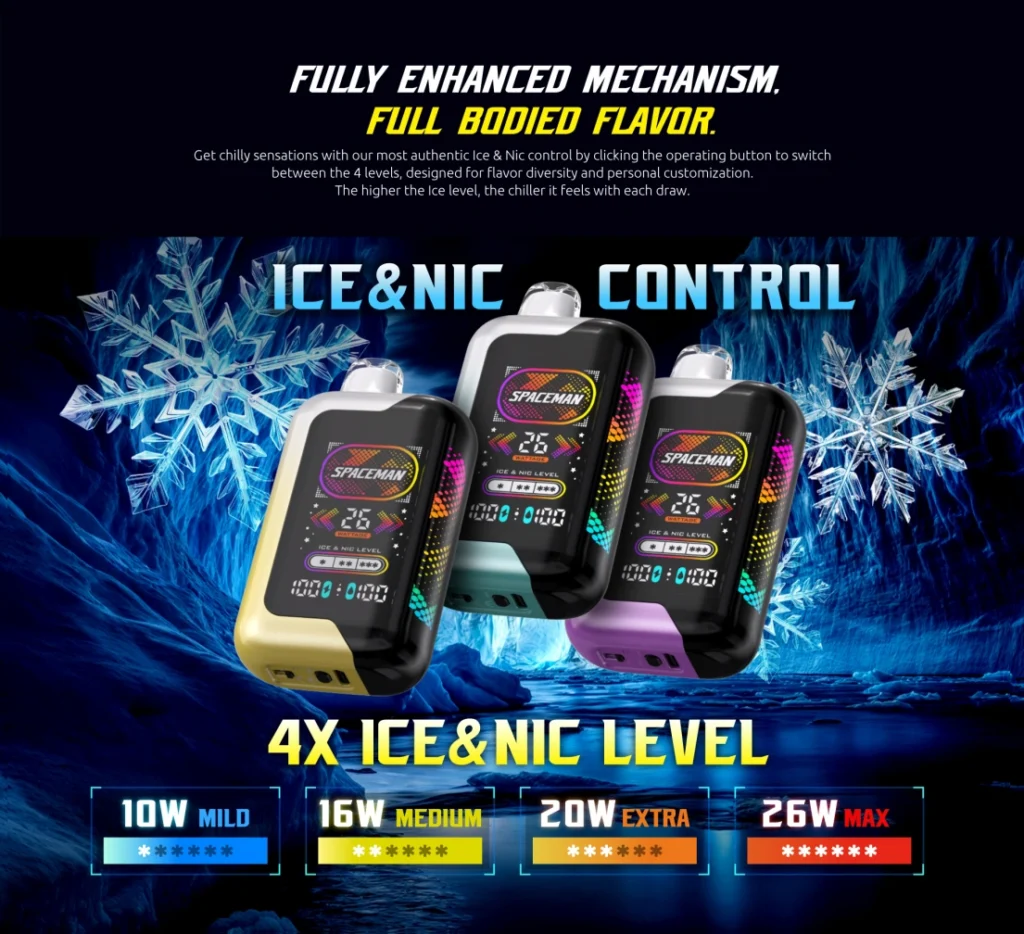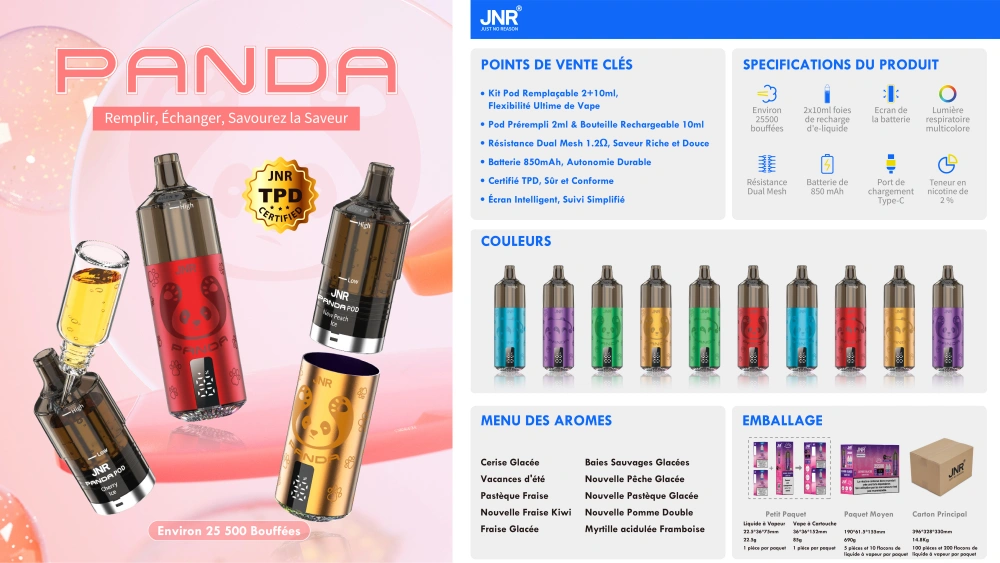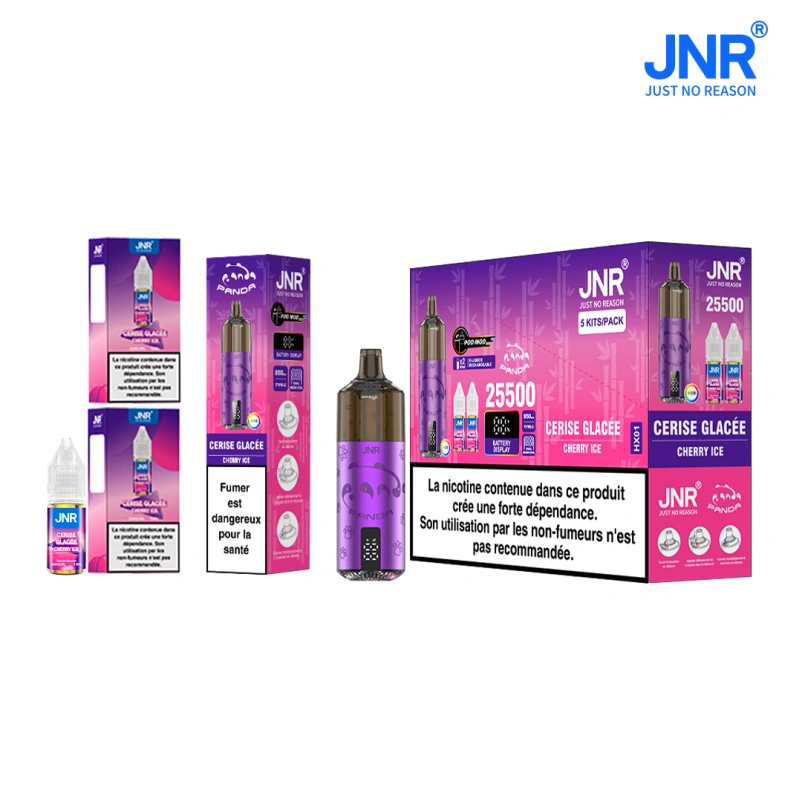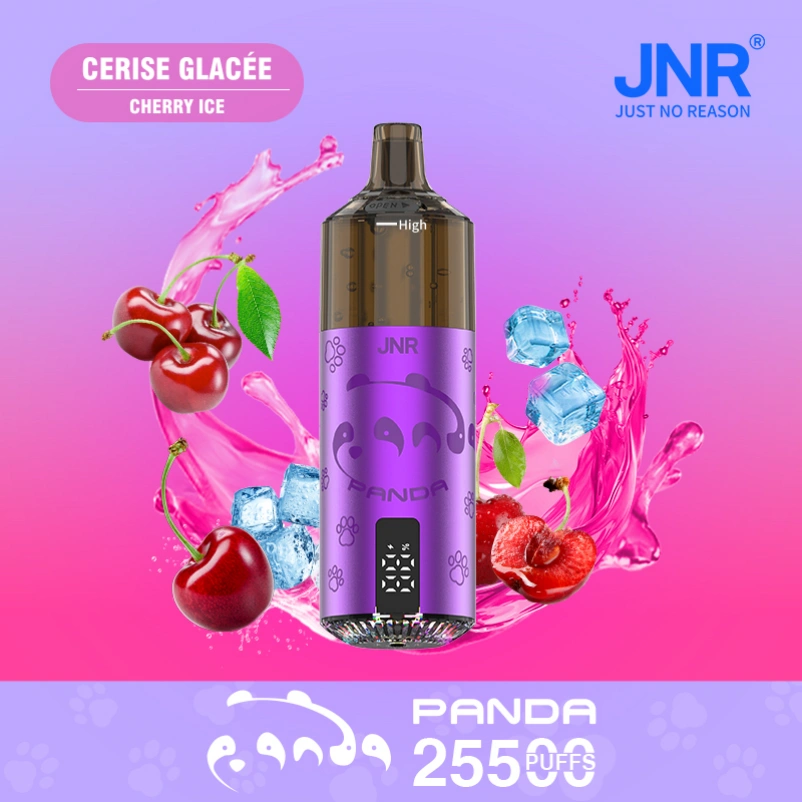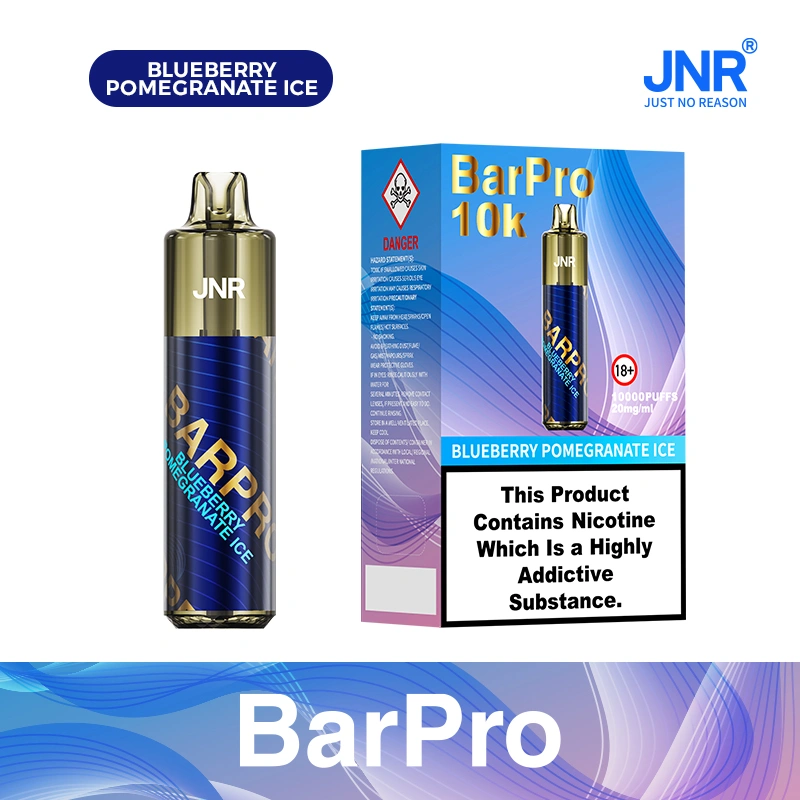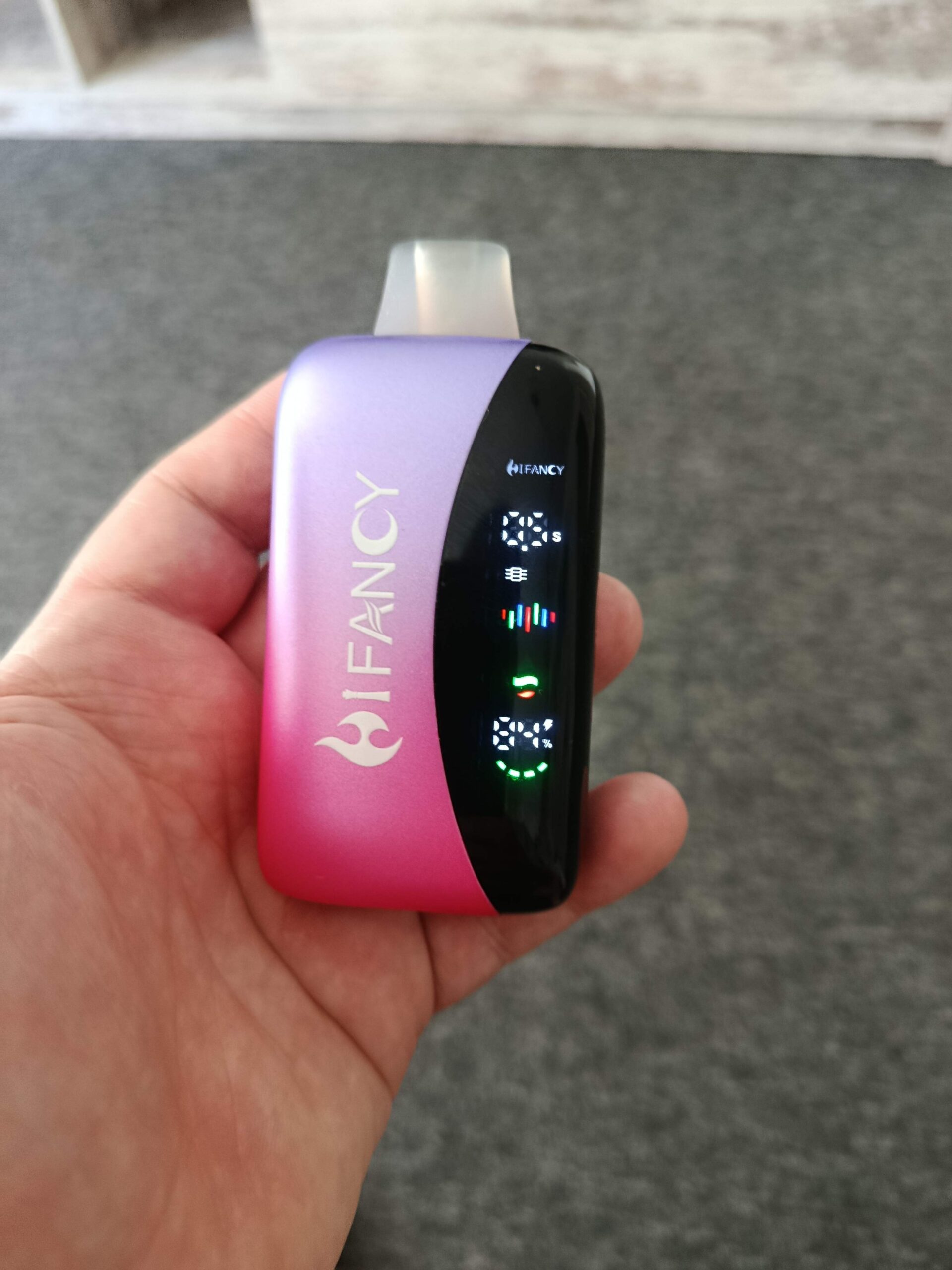Värmeutvecklingssituationen för e-cigaretter under användning

Managing Heat Generation in Electronic Cigarettes: Causes, Safety, and Optimization
Electronic cigarettes (e-cigarettes) rely on heating elements to vaporize e-liquid, a process that inherently generates heat. While some warmth is normal, excessive or uneven heating can affect performance, safety, and user comfort. Understanding the factors influencing heat generation and implementing preventive measures ensures a safer, more enjoyable vaping experience.
Normal Heat Generation During Vaping
The Role of Coils in Heat Production
The coil is the primary component responsible for converting electrical energy into heat. Its design, material, and resistance directly impact temperature control and vapor output.
Coil Material and Resistance
Different materials, such as kanthal, stainless steel, or nickel, have varying heat conductivity properties. Lower-resistance coils (e.g., sub-ohm coils) heat up faster and produce more vapor but also generate greater surface heat. For example, a 0.2-ohm coil will reach higher temperatures than a 1.0-ohm coil at the same wattage, leading to a warmer device exterior.
Power Settings and Heat Output
Increasing wattage or voltage accelerates heat generation. Devices with adjustable power settings allow users to customize vapor production, but higher settings amplify thermal stress on the coil and surrounding components. Beginners should start with lower power levels and gradually increase to find a balance between warmth and flavor.
Heat Dissipation Through Device Design
E-cigarette manufacturers incorporate design features to manage and distribute heat effectively, preventing localized overheating.
Airflow Systems and Cooling
Adjustable airflow vents play a dual role: they regulate vapor density and help cool the coil by directing fresh air over it during inhalation. Wider airflow settings reduce heat buildup by increasing airflow velocity, while narrower settings enhance flavor at the cost of slightly higher temperatures.
Material Selection for Heat Resistance
High-quality devices use heat-resistant materials like stainless steel, aluminum, or reinforced plastics for the body and tank. These materials absorb and dissipate heat efficiently, minimizing discomfort during prolonged use. Users should avoid devices with poorly insulated components, as they may retain heat longer.
Signs of Excessive Heating and Potential Risks
Overheating Indicators to Watch For
While some warmth is expected, certain symptoms suggest the device is operating beyond safe temperature ranges.
Physical Warning Signs
- Hot to the Touch: The exterior of the device becomes uncomfortably warm, especially near the coil or battery compartment.
- Discolored or Warped Components: Prolonged exposure to high temperatures may cause plastic parts to deform or tank seals to degrade, leading to leaks.
- Unusual Odors: A burning smell often indicates overheated e-liquid or coil material, requiring immediate attention.
Performance Issues Linked to Heat
- Reduced Vapor Production: Overheating can cause e-liquid to vaporize too quickly, leading to dry hits or inconsistent vapor output.
- Battery Drain: Excessive heat accelerates battery discharge, reducing usage time between charges.
- Coil Degradation: High temperatures shorten coil lifespan, necessitating more frequent replacements.
Safety Risks Associated with Overheating
Ignoring overheating warnings can lead to severe consequences, including hardware damage or personal injury.
Thermal Runaway in Batteries
Lithium-ion batteries, commonly used in e-cigarettes, are sensitive to temperature fluctuations. Overheating can trigger thermal runaway, a chain reaction causing the battery to overheat, swell, or even explode. Symptoms include excessive heat, hissing sounds, or leakage.
E-Liquid Combustion
If the coil temperature exceeds the boiling point of e-liquid ingredients (e.g., glycerin or flavorings), combustion may occur, releasing harmful byproducts. This risk is higher with low-quality e-liquids or improperly wicked coils.
Practical Solutions to Reduce Heat Generation
Adjusting Vaping Habits for Better Thermal Management
User behavior significantly influences device temperature. Simple changes to puff duration and frequency can mitigate overheating.
Pacing Inhalation and Avoiding Chain Vaping
Continuous vaping without breaks prevents the coil from cooling between puffs, leading to rapid heat accumulation. Implementing a “5-second rule”—waiting at least 5 seconds between draws—allows the device to dissipate heat naturally.
Optimizing Puff Duration and Strength
Longer, harder puffs flood the coil with e-liquid, increasing the risk of overheating and gurgling. Shorter, gentler inhalations maintain consistent vapor production while reducing thermal stress.
Maintaining Device Components for Efficient Cooling
Regular upkeep ensures optimal airflow and heat dissipation, extending the lifespan of both the device and its components.
Cleaning Airflow Vents and Coils
E-liquid residue and dust can clog airflow vents, restricting ventilation and trapping heat. Use a soft brush or compressed air to clean vents weekly. Similarly, clean reusable coils by rinsing them under warm water and allowing them to dry thoroughly before reuse.
Replacing Worn-Out Coils and Wicks
Degraded coils lose their ability to regulate heat evenly, leading to hotspots and uneven vaporization. Replace coils every 1–2 weeks, or sooner if performance declines. Ensure wicks are properly saturated with e-liquid to prevent dry hits, which generate excessive heat.
Leveraging Device Features for Temperature Control
Modern e-cigarettes offer advanced settings to monitor and limit heat generation, enhancing safety and consistency.
Using Temperature Control (TC) Modes
TC-enabled devices allow users to set a maximum coil temperature, preventing overheating by automatically adjusting power output. This feature is particularly useful for preventing dry hits and extending coil life.
Adjusting Wattage Curves (Advanced Users)
Some devices permit custom wattage curves, enabling users to program power delivery over time. For example, starting at a lower wattage and gradually increasing it can reduce initial thermal shock to the coil, promoting even heating.
By recognizing normal heat patterns, identifying overheating risks, and adopting proactive maintenance strategies, vapers can enjoy a safer, more comfortable experience. Prioritizing device quality, responsible usage, and regular upkeep minimizes heat-related issues while maximizing performance.

